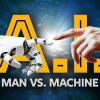
Breaking News
 Elon Tells Rogan the Real Reason Democrats are Prolonging the Government Shutdown [WATCH]
Elon Tells Rogan the Real Reason Democrats are Prolonging the Government Shutdown [WATCH]
 Newsom: Trump Is Trying to Rig the Election -- He Knows GOP Will Lose
Newsom: Trump Is Trying to Rig the Election -- He Knows GOP Will Lose
 There is zero justification for the Department of Justice's silence while the most serious...
There is zero justification for the Department of Justice's silence while the most serious...
 Gabbard Says Trump Has Ended America's Era Of 'Regime Change'
Gabbard Says Trump Has Ended America's Era Of 'Regime Change'
Top Tech News
 Graphene Dream Becomes a Reality as Miracle Material Enters Production for Better Chips, Batteries
Graphene Dream Becomes a Reality as Miracle Material Enters Production for Better Chips, Batteries
 Virtual Fencing May Allow Thousands More Cattle to Be Ranched on Land Rather Than in Barns
Virtual Fencing May Allow Thousands More Cattle to Be Ranched on Land Rather Than in Barns
 Prominent Personalities Sign Letter Seeking Ban On 'Development Of Superintelligence'
Prominent Personalities Sign Letter Seeking Ban On 'Development Of Superintelligence'
 Why 'Mirror Life' Is Causing Some Genetic Scientists To Freak Out
Why 'Mirror Life' Is Causing Some Genetic Scientists To Freak Out
 Retina e-paper promises screens 'visually indistinguishable from reality'
Retina e-paper promises screens 'visually indistinguishable from reality'
 Scientists baffled as interstellar visitor appears to reverse thrust before vanishing behind the sun
Scientists baffled as interstellar visitor appears to reverse thrust before vanishing behind the sun
 Future of Satellite of Direct to Cellphone
Future of Satellite of Direct to Cellphone
 Amazon goes nuclear with new modular reactor plant
Amazon goes nuclear with new modular reactor plant
 China Is Making 800-Mile EV Batteries. Here's Why America Can't Have Them
China Is Making 800-Mile EV Batteries. Here's Why America Can't Have Them
EHang commits to building air taxi terminal for China

EHang isn't the only company trying to get air taxis to fly in cities around the world, and is not the first to build somewhere for them to operate from, but its so-called E-port could well be the first to go into operation – something that's scheduled to happen by the end of 2020.
The E-port terminal building will be three stories high and have a 2,500 sq m (almost 27,000 sq ft) footprint. There will be a reception hall on the first floor, a passenger waiting area on the second and departure/arrivals on the third. Four landing pads are to be located on the roof, though the plan does call for 20 EHang 216 two-seat autonomous aerial vehicles (AAV) to be in operation at the facility.
The EHang 216 electric air taxi sports eight arms around the passenger pod, each home to two rotors. It has a reported top speed of 130 km/h (80 mph), but will cruise at about 100 km/h – though flight time is currently just 21 minutes per charge so it's likely that only some of the fleet in Hezhou will be in the air at the same time, while others are on charge.

 China Innovates: Transforming Sand into Paper
China Innovates: Transforming Sand into Paper

